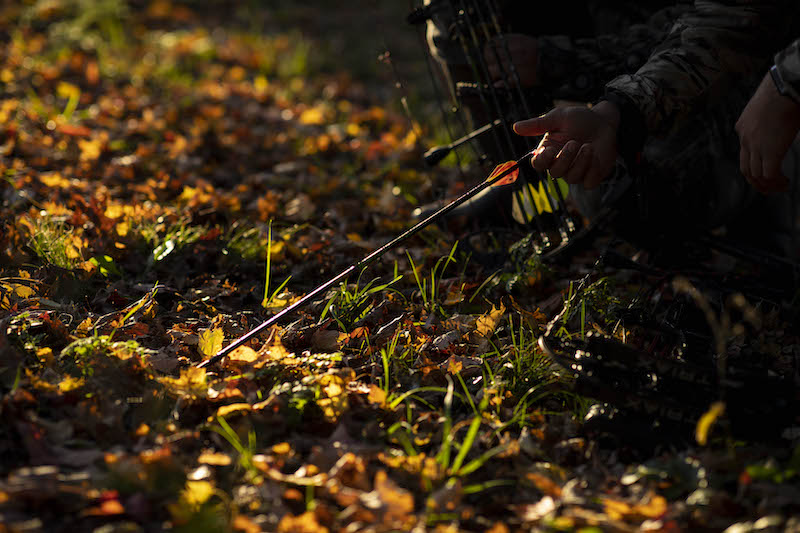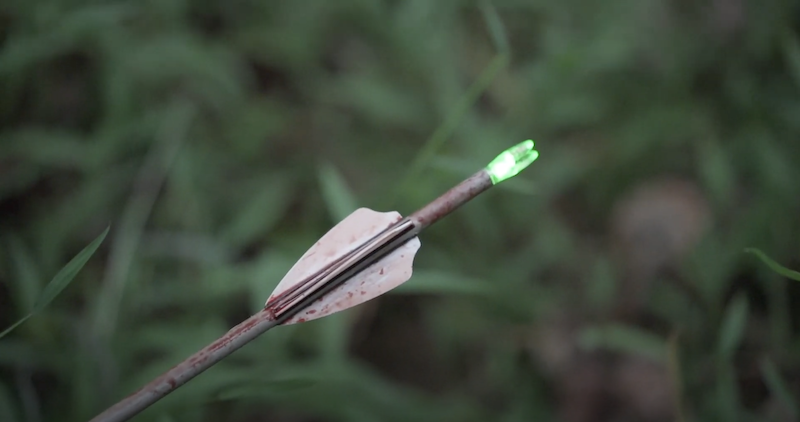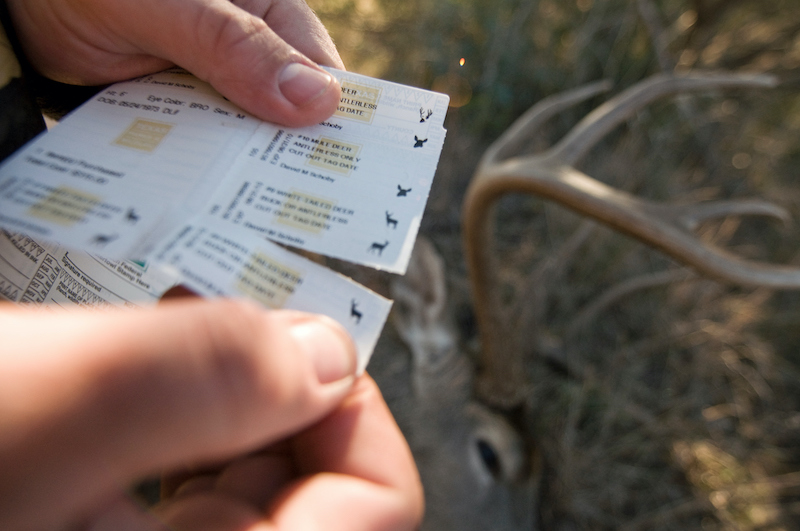Broadhead-tipped arrows kill through massive blood loss, which can happen just seconds after impact. During those few seconds, however, a deer can disappear into thick brush and run 100 yards or more. To find animals you don’t see fall, you must follow their blood trail. Here’s the step-by-step process for blood-trailing deer and other quarry.

Following the blood trail immediately after a hit could cause the deer to run. Give the deer time to pass away naturally. Photo Credit: ATA
As the arrow flies from the bow, bowhunters must shift gears to gather information. Note exactly where your arrow hits. If the deer kicks its rear legs high, it’s likely heart-shot. If it hunches up its back, it’s likely hit in the liver or abdomen. Watch where it runs, study its body language, and listen for it to fall.
Wait at least 30 minutes after shooting before leaving your blind or descending from your treestand. That wait will test your patience much more than waiting for a good shot opportunity. Minutes can feel like hours, but waiting can calm your nerves and help you reflect on what just happened, which helps ensure short blood trails.
If the wound didn’t cause quick death, waiting prevents you from pushing a deer farther. If you begin blood-trailing too soon the deer might resume running, which means a longer and more difficult tracking job. If your shot was less-than-ideal and you wait, the deer will likely bed after a short run and die.

Locate your arrow and analyze the blood to determine where the deer was hit. Photo Credit: ATA
After 30 minutes, quietly walk to where the deer stood when you shot. Look for blood and your arrow. Trailing scenarios vary, but hard-hit deer rarely run uphill, and they often head toward water if the wound wasn’t quickly fatal. An arrow passing through the deer usually provides excellent clues. Pass-through shots also open better wound channels and blood trails.
If you find your arrow, give it the sniff test. You might not have a bloodhound’s nose, but quick sniffs can provide insights about your hit. Bile smells like manure, and indicates an abdominal hit. Blood has a more neutral or slightly metallic odor.

The color of the blood will tell you where your arrow landed. Photo Credit: ATA
Reading blood is much like reading other sign. Different colors and consistencies tell you lots about the hit. Bright red blood with small bubbles indicates a lung hit. A hit through both lungs delivers quick kills. Dark red blood signals an arterial hit, especially if it looks like it’s spraying on both sides of the deer’s flight path. That’s a good sign. Your deer is likely near.
Green bile or yellow-brown partially digested plant matter signals stomach or intestinal hits. Don’t despair, especially if you also find significant blood. You have a good chance of recovering your deer, but back off for now.
If you find sign of a bad hit, wait six to eight hours before pressing on. Tracking a poorly hit deer too soon makes it run farther. Let it bed and die. If it’s getting dark and temperatures are below 40 degrees, leave the woods and return in the morning.

Look for droplets of blood on the ground or leaves. Photo Credit: ATA
After assessing the situation, slowly follow the blood trail while evaluating information already collected. Look for blood drops, splatters and smears on the ground, trees and brush.
Blood quantities vary by the wound. Low exit holes typically produce great blood trails. Whether you see lots of blood or occasional splatters, work slowly while inspecting the area. Blood looks wet and shiny. It won’t look dull like red leaves unless hours have passed.
As you unravel the blood trail, stay to the side and mark each spot with orange flagging tape. If you lose the trail, return to the last spot and start making concentric circles. Go slowly and look for blood, fresh tracks, broken branches, disturbed leaves, overturned rocks, and the deer itself. Deer blend into the surroundings, and it’s easy to walk past a motionless body.

Tag your harvest, field dress it, then freeze the meat or donate it. Photo Credit: John Hafner
Once you find your animal, follow state laws regarding tagging and reporting the kill. Then take photos, field dress the animal, and butcher it yourself or take it to a processor.
Blood trailing is much easier when you place your shot accurately, which comes from practice, archery lessons, self-discipline, proper equipment, and studying deer anatomy and shot placement. The staff at an archery shop can set up your equipment and teach you to shoot. Then it’s up to you to practice and study shot placement.